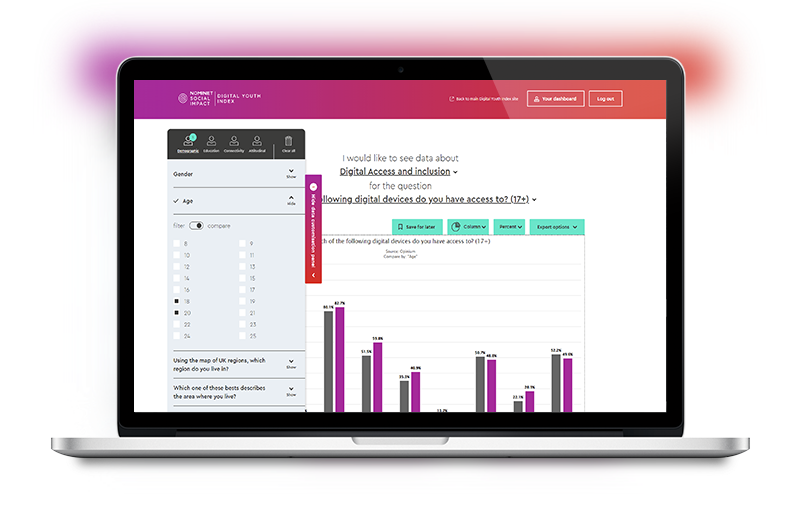A device that won't suffice: leaving home could meaning leaving your digital set up too
Around 16% of over 18s don't have access to a laptop or desktop computer
As is the case with device poverty, connectivity and data poverty refer to the ability to access the internet and the quality of the connection. While the majority of young people with internet access at home say they have access to a good quality connection, more than one in ten do not. Many young people rely entirely on mobile data, especially as they become more independent and move away from home. Heavy reliance on mobile data is also more evident in lower income households, e.g. 18% of students who receive free school meals rely exclusively on mobile data for their internet connection compared to 15% of all young people aged 8-25. Reliance on mobile data also increases with age, e.g. 22% of 23-25 year olds rely on it entirely compared to 13% of 14-16 year olds. This is assumed to be predominantly driven by a shift to independent living, and expense being a barrier to broadband installation.
Why does this matter?
Imagine writing your CV or using a multimedia online classroom on a mobile screen. Many of these systems are not optimised for mobile devices and almost every job application is optimised for laptops and desktops. The index shows that young people often use devices that are not fit for purpose or of high enough quality to handle more advanced functionality.
The Nominet Digital Youth Index indicates that the impact of poor-quality devices is felt strongest by young people who are independent of parents, may have recently left home, and are more likely to depend on their digital devices for stepping into the world of work, or pursuing other forms of education and training.
Implications
- What are the implications for employers and educators to optimise education and job sites for mobile use in order to meet young people where they are?
- How much choice do young people have when it comes to channel to engage – and how much of this choice is taken away by interoperability constraints?




